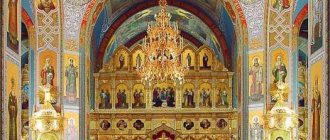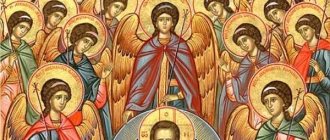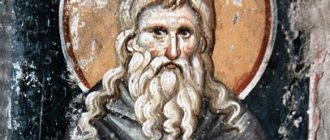From the editor : How did episcopate arise in the Ancient Church? What was the procedure for nominating bishops? By what criteria were candidates for bishops selected, and what participation did the community take in this? We offer an article by historian Kiril Mikhailov.
***
The episcopate is the most important basis of the church structure - both in its special administrative functions and in its spiritual dimension. The word “επίσκοπος” translated from Greek means “overseer”, “keeper of order”. This is the highest level of the church hierarchy - it is bishops who are the bearers of apostolic grace, the gifts of the Holy Spirit. Issues of apostolic succession, ideological harmony of the episcopate, and internal subordination are among the most important in the life of the church community. These issues can lead to both civil wars and civilizational conflicts. In the history of the Russian Old Believers, the most important problem was the episcopal question; it led to the internal drama of the entire community of adherents of ancient piety - a division into two irreconcilable ideological camps: priests and non-priests. Since the non-priests, after the death of Bishop Pavel Kolomensky, no longer saw pious archpastors in Rus' or anywhere in the world, the possibility of ordaining new priests disappeared, and after the death of all the priests who did not support Nikon’s reform, the possibility of performing the most important sacraments for Christian life also disappeared - for example, Marriage and Eucharist. As a result, among the Bespopovtsy there was no universal agreement on these issues, which are the most important for the spiritual life of every Christian, which led to further demarcation of the Bespopovtsy. Thus, the most morally strong and spiritually healthy part of Russian society was unable to consolidate against secular church-state measures and was pushed to the periphery of socio-political life - both figuratively and geographically.
Bishops of the Russian Orthodox Old Believer Church, now deceased. Photo from the archive of Priest John Gusev
Thus, the bishop is not just an administrator, he is also the spiritual leader of the church community, its moral guide. For the Christian consciousness, these three dimensions of episcopacy - mystical apostolic succession, organizing functions and spiritual fatherhood - are linked together, and the question of any one of these aspects cannot arise in isolation from the other two.
The bishop is the center of church life. But he is not the whole Church and not even the community. It is important to trace how the institution of episcopate was formed, how it transformed over time, and what lessons its history can teach us.
How did the episcopate arise?
The word “bishop” itself is not of Christian or even religious origin. In Roman legal literature, the term is found in different senses, and was not always used in relation to pagan priests, high or even ordinary. Thus, there were “bishops” among the ministers at the Temple of Apollo of Rhodes, there were officials in charge of collecting funds, there were inspectors in the Athens Maritime Union. Often, “bishops” were the name given to overseers of various kinds: over conquered territories, over construction work, over slaves, over market trade in markets.
In the Holy Scriptures, the word “bishop” occurred in the Old Testament (2 Ezra 9: 39-40), from where it was later borrowed by the apostles. The Savior Himself in Holy Scripture is called “bishop,” which means “guardian of our souls” (1 Peter 2:25); “Bishop,” “High Priest” (Heb. 4:14; 7, 26). The apostolic title was not used in practice, being replaced by the concept “bishop” (Acts 1:20). From the apostles the title of bishop was transferred to their immediate disciples. St. Clement of Rome describes the “creation” of the episcopal rank by the apostles: “preaching in various countries and cities, the first-born of the believers, after spiritual testing, were appointed bishops and deacons for future believers” (1 Epistle).
As the early Christian communities grew, the need for an organizing principle arose - this is described in detail in the Apostolic Epistles, especially in St. Paul. Already under the first Apostles—witnesses of the Resurrection and Ascension of the Savior—the first false teachers appeared, including “those who love to take precedence” (3 John 1:9). Therefore, the significance of the overseer bishop was that he combined administration, doctrinal authority, and high moral standards.
The three-tier church structure (bishop-presbyter-deacon) developed in the Apostolic Church. But often, when reading Holy Scripture in isolation from Church Tradition, one may get a wrong idea about the two-part nature of the ancient clergy: often the terms “presbyter” (priest, priest) and “bishop” (bishop, chief) are used as synonyms. Protestants take advantage of this fact, asserting the relativity of the early church hierarchy. This is partly true: the Holy Apostles were not bureaucrats, and both the bishop himself and authoritative priests could be called “first” in any community. And vice versa: both priests themselves and bishops were called “presbyters”; in small communities they continued to perform ordinary priestly activities. And according to the logic of things: a bishop is not someone outside the clergy - he is a priest in almost all his fullness, an almost absolute conductor of the grace of the Holy Spirit. “Almost” - because the complete, absolute guide is the Savior Himself, as the Apostle Paul calls him: “This is what our High Priest should be: holy, free from evil, blameless, separated from sinners and exalted above the heavens, who has no need daily (...) to offer sacrifices first for his own sins, then for the sins of the people, for He did this once, sacrificing Himself. For the law appoints as high priests those who have infirmities; and the word of the oath, after the law, established the Son to be perfect forever” (Heb. 7:26-28).
However, if we turn to the written part of the Holy Tradition - to the Apostolic rules and regulations, to the letters of the Holy Fathers, we will see that the ancient Church from its very foundation on the day of Pentecost had the same structure as today.
Episcopal consecration
The peculiarity of episcopal consecration as ordination to the dignity lies in the recognition by the Christian Orthodox and Catholic churches of the apostolic succession of episcopacy. The ordination ceremony is performed by at least two bishops (council), the need to fulfill this condition is indicated by the First Apostolic Canon; In the Russian Orthodox Church, applicants for the role of bishop are traditionally selected from among the monks of the minor schema, and in the Eastern Christian churches - from widower priests or celibates.
By the 7th century, the obligatory custom of celibacy for bishops began to be perceived as the norm and was enshrined in the 12th and 48th rules of the Trullo Soboa. Moreover, if the future bishop already had a wife, then the couple separated of their own free will, and after ordination, the ex-wife went to a remote nunnery, took monastic vows - and the monastery moved under the direct patronage of the new bishop.
Who and how became bishops
Now the second, opposite side of the question. It is impossible, like some lovers of total administration today, to reduce the entire ancient church to a hierarchy. The Church is a community, “a chosen race, a royal priesthood, a holy nation, a special people, that you may proclaim the praises of Him who called you out of darkness into His marvelous light” (1 Peter 2:9). It was in the community that the grace of the Holy Spirit took place; it is the church community that is the prototype of the Kingdom of Heaven. From the very first words, any Apostle insists on community prayer, on conciliar action in charity and mutual support. Accordingly, such “comradely” relations excluded the invasion from the outside by some kind of “power vertical”. In this regard, the early Christian community opposed both the Roman pagan communities uniting around the all-powerful priests, and the Jewish communities of the Diaspora, which in religious terms were led by “first among equals” (remember: the rabbi (from “rebbe” - “teacher”) is not spiritual san, but a respectful designation for an authoritative teacher; there were priests only in the only temple in Jerusalem, before its destruction by the Romans). Unlike the “Hellenes and Jews,” the first Christians combined hierarchical and partner methods of self-organization of their communities.
The most important evidence is the news of the election of the early Christian bishops. However, not only bishops were elected, but also presbyters - from among the most literate and moral parishioners. This often happened spontaneously (due to the situational persecution of the first Christians and the mobility of the first communities), therefore at first it was not ritualized or ordered in any way. The first Christians did not have any system of theological educational institutions, therefore, by mutual agreement, the most educated and spiritually experienced person was offered to become a presbyter - the one who could actually become a true shepherd for all Christians of some enclave. Both Scripture and the Apostolic Canons repeatedly testify to how presbyters were ordained.
The situation with the bishop was somewhat different - more spontaneous, and therefore requiring legal and ritual reinforcement. As a rule, an aging or ill archpastor himself elected his successor - from among those who would become a real spiritual leader for the community, therefore the issue of universal voting for him was a secondary matter. But in many situations (again, due to persecution), large communities in some areas (“dioceses”) had to independently elect an archpastor. And if the candidacy was not proposed by the previous bishop or, in the case of crowded communities in large cities, could be controversial, a vote was held. Both clergy and lay people took part in these elections—there was no fundamental “legal” difference between them in the Ancient Church. However, the “testing” of candidates was the responsibility of the clergy. St. Sophronius of Jerusalem wrote: “There is an ancient apostolic tradition in the holy Churches throughout the universe, according to which those who are elevated to the level of clergy are obliged by the oldest clergy to openly state how they philosophize and how they maintain faith. This tradition originates from the wise Apostle Paul, who warns that none of these should run their course in vain” (from the Council Epistle of Sophronius of Jerusalem to Sergius, Patriarch of Constantinople).
The Apostles already set a high moral standard for candidates for bishops: “he must be blameless, the husband of one wife, sober, chaste, decent, honest, hospitable, teacher, not a drunkard, not a murderer, not quarrelsome, not self-seeking, but quiet, peace-loving, not a lover of money, a good steward of his household, keeping his children in obedience with all honesty,” and also that he should not be “a convert, lest he become proud and fall into condemnation with the devil” (1 Tim., 3). St. John Chrysostom, analyzing these lines, about (including the permission of one-time marriage before consecration), which is required of a candidate for bishop, which, in his opinion, was caused by the urgent need for archpastors in that era. The instructions given to Timothy in other chapters of Paul's Epistle also relate to the episcopal service: laying on of hands, judging elders, caring for widows, teaching, governing the church as one's home, preserving church tradition.
It is important that the institution of monasticism as such did not exist in that era. The candidate for bishop was not required, as much later, to undergo indispensable monastic tonsure. The only requirement is his monogamy. But in practice, the Ancient Church already began to give preference to widowers or celibates, following the words of St. Paul: “The unmarried man worries about how to please the Lord, but the married man worries about how to please his wife, and he is divided” (1 Cor. , 7: 32). The resolutions of the Sixth and Fifth-Sixth Councils already legislated the mandatory celibacy of the bishops.
Theophilus of Alexandria describes the procedure for election as follows: “Let the whole council of clergy agree and elect, and then let the bishop test the chosen one, and with the consent of the priesthood, let him perform the ordination in the midst of the church, in the presence of the people, and with the proclamation of the bishop, if the people can testify about him" (rule 7). Thus, two parties began to participate symbolically and mystically in the determination of the new archpastor: the community (“holy people”) and the apostolic successors themselves. The participation of the people prevented the personal dictatorship of individual power-hungers; the organizing influence and moral leadership of the hierarchy warned the community against being carried away by the collective passions described in the Acts of the Holy Apostles. Thus, two main points were formed in the emergence of a new bishop:
- Election
- Dedication.
Notes
- In the Synodal Version: “<…> where Jesus entered as a forerunner for us, becoming a High Priest forever after the order of Melchizedek”
(Heb. 6:20) - [www.klikovo.ru/db/book/msg/4194 Prot. Vladislav Tsypin. Canon law.
1994, p. 281] - [www.catholic.ru/ccc/0871.html Quoted. based on the Russian translation of the Catechism of the Catholic Church. Paragraphs 882 and 883]
- [www.luther.ru/news/church/1757-2012-11-23-18-12-03.html BISHOP IGOR KNYAZEV WAS VISITED TO ULAN-UDE AND IRKUTSK]
Who are the judges?
All church people are obliged to live according to God's law and not violate it. And the bishop even more so. The mere fact that the word “bishop” means “overseer” prescribes for this rank that people must observe all the laws prescribed by the Almighty, and he himself is also obliged to observe them.
If a bishop in a church behaves inappropriately, he can be defrocked according to church tradition. If the bishop’s deeds lead to destruction, abominations are being committed in the bishop’s diocese and lawlessness reigns, the council of bishops, with the blessing of His Holiness the Patriarch, makes a decision that by his deeds the bishop is destroying the apostolic ministry, and decides to depose him. After this, the ex-bishop becomes a monk or layman.
Ancient Orthodox Church
In the first centuries, during the terrible time of persecution of Christians, bishops became martyrs for their faith and service, they were tortured and destroyed in the most cruel way.
The ancient church was characterized by the presence in it of the rank of choir-bishop, that is, the rural head of the church. Each locality had its own bishop, assisted by priests. With the passage of time and the development of life, there was an increase in the number of parishioners; the bishop, unable to cope with the volume of work, began to gradually transfer part of the work to the priests through the antimins - this is a special platform for sacred rites. Thus, he unburdened himself by delegating his powers.
The bishop is the person responsible for the improvement of church life, and the priest is his assistant in carrying out this service.
20th century: attempts to destroy traditions
In the twentieth century, in the 20s and 30s, a movement began whose adherents tried to influence the authorities and destroy the established foundations of church life. A so-called parallel hierarchy of “renovationists” arose - metropolitans and bishops appeared in leather robes over their cassocks and in red pants with stripes, they got married and started families, got divorced and got married again. At the same time, they acted, as they believed, on behalf of the Church, but in fact, from the church point of view, this was lawlessness. Soon this movement was liquidated, and the foundations returned to normal.
What did the Metropolitan do?
The metropolitan headed the church community of a particular region. Regional divisions into districts were the basis of the administrative division of the church. Each province was headed by its own metropolitan. And they were all subordinate to the Pope. And in Orthodoxy, metropolitans were subordinate to the Patriarch. At the same time, metropolitans were endowed with certain functions in addition to purely church affairs:
- he resolved disputes and managed the lives of all the priests and monks of the monasteries located on his territory. In fact, he was the ruler of his district and sovereign master;
- The metropolitan judged criminal cases involving crimes against the church and faith. These included sacrilege and apostasy. It must be said that in Russia back in the 18th century people were burned at the stake for apostasy. And for sacrilege they were punished physically - they beat them with sheleps or batogs. Many could not stand such punishment and died;
- the metropolitan was in charge of divorce cases and inheritance disputes;
- in different countries, metropolitans were also given other functions. For example, in Russia they were obliged to monitor the correctness of weights and measures. Church ministers checked the weight of weights in the markets to prevent buyers from being deceived.
Thus, the metropolitan decided on important church matters and participated in the life of society. He was a prominent figure in his field.
Metropolitan in the Catholic Church
At first, the rights of the metropolitan in both the West and the East remained absolutely equal. But the emergence of new German states changed the position of the metropolitan, because the metropolises themselves lost their former significance. Gradually, bishops became independent of the metropolitans, and only in England did the metropolitans for a long time still have their former rights.
Now in the Catholic Church several dioceses (and archdioceses) can form a metropolitanate or an ecclesiastical province. Since the center of the metropolitanate must coincide with the center of the archdiocese, the metropolitan in the Catholic Church is also the archbishop. In a number of countries, such as Italy, the USA and others, metropolises have been united into church regions. The bishops of most countries are united in a conference of bishops, which has great powers in organizing the church life of the country.
Vicar - definition of the word
Translated from Latin, this term means “deputy”, “representative”, someone acting “on behalf and on behalf of”. It is from this word that the prefix “vice” comes from. The term first appears as an administrative one back in the Roman Empire. Under Diocletian and Constantine, this was the name given to the rulers who had a diocese or region under their control.
Vicars were subordinate to the prefects and acted on their behalf. In the early Middle Ages in the Holy Roman Empire, this title was borne by local representatives of the supreme ruler. They administered justice and carried out administration on behalf of the emperor. This title was especially common in Italian cities. But this term became most famous in church administrative law after the victory of Christianity. Even in early times, bishops had their own vicars - assistants. They were archdeacons, as well as local parish priests who cared for human souls outside the dioceses.
Only celibates
At the very beginning of the formation of bishoprics on Christian soil, a bishop could be either celibate or married. Over time, it became clear that this activity requires complete dedication and renunciation of all earthly things from people, that is, the bishop must become a full-fledged monk.
In essence, a monk is a “soldier of Christ” who takes a great spiritual oath. He gives the Almighty a vow of celibacy, obedience, that is, complete renunciation of his will, and a vow of non-covetousness - that is, the monk should not have his own property. It is in this format that a monk serves the Lord on this earth, either in hermitage or in monasteries.
Church communities called precisely such people to serve as bishops; they were spiritually experienced, strong, strong in spirit and unencumbered by anything worldly, not having worries about their family and loved ones. Only such a person can sincerely, completely and completely surrender, serve the Lord. This is how the institution of the monk-bishop was formed.
Metropolitans today
Today, metropolitans continue to resolve important issues of the Church. Above the metropolitan in the church hierarchy, only the Patriarch stands. The Metropolitan wears a blue robe and a white hood with a cross; clergy of lower rank wear black hoods.
Metropolitans head metropolitan areas; this title is also held by bishops of self-governing Churches.
Among modern metropolitans, one of the most famous hierarchs is Metropolitan Hilarion (Alfeev) - theologian, church historian, composer and teacher, Chairman of the Department for External Church Relations of the Moscow Patriarchate, permanent member of the Holy Synod, author of the work “Jesus Christ. Life and Teaching".
Who is a Metropolitan
Metropolitan is an episcopal title in the Russian Orthodox Church. Such spiritual rank belongs to the highest rank. The word “metropolitan” comes from the word “metropolis”; metropolitan translated from Greek means a person in the capital. The first official mention of this title refers to the document of the First Ecumenical Council (325). At the end of the 4th rule it is written: “It is appropriate for its metropolitan to approve such actions in each region.”
The Metropolitan not only had the right to convene local Councils, but was also endowed with other important church powers.
- the right to supervise church affairs throughout the region. This meant that without the permission of the metropolitan, the bishops did not make significant decisions.
- the right to give letters of communion to persons from the clergy excommunicating from their dioceses (litters formatas);
- the right to accept appeals against bishops from presbyters and clergy;
- the right to confirm and consecrate, with the participation of the other two or three bishops newly elected to the bishopric.
City bishops were considered metropolitans, but he could also head a large province or an entire region. This is an honorary title. The head of the metropolitan in the Russian Church is considered only the Patriarch. The Metropolitan bears a great responsibility. Of course, this title did not always exist.
Eucharist
The bishop is, first of all, the person who celebrates the Eucharist, the celebration of which can also be entrusted by the bishop to a priest.
The Eucharist is the main Sacrament of the Church; in its process, the vocation of a Christian is realized - unity with the Lord, thanksgiving to the Almighty through prayers and eating bread and wine as symbols of the true Body and Blood of Jesus. By praying and eating, a Christian becomes one with Christ.
All church holidays are marked by the celebration of the Eucharist, which underlies the main church service - the Divine Liturgy.










